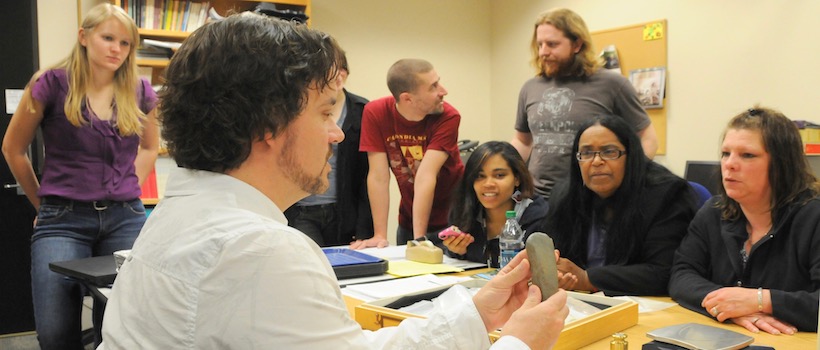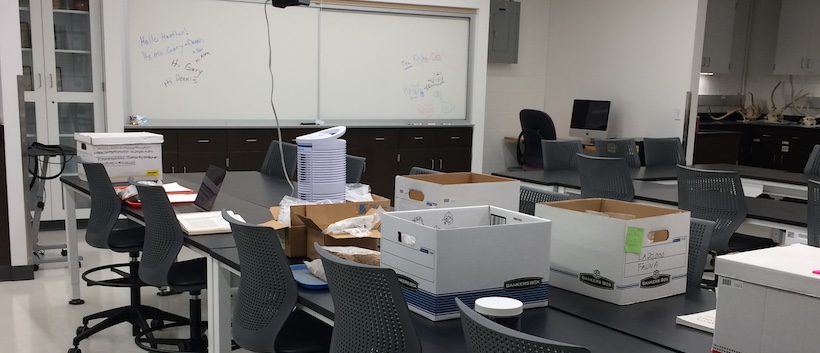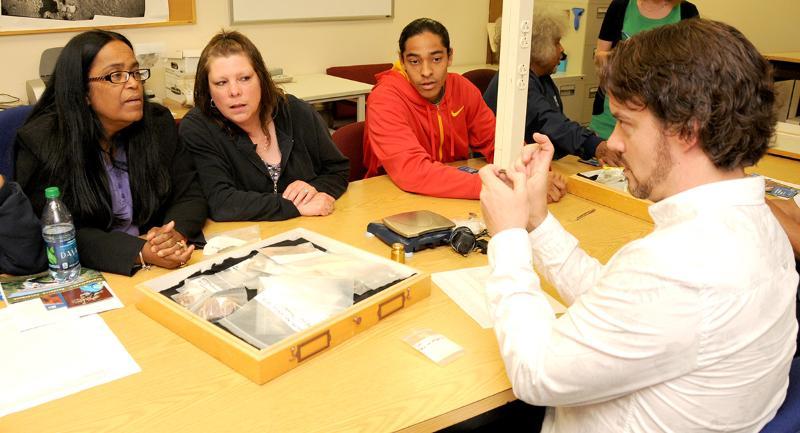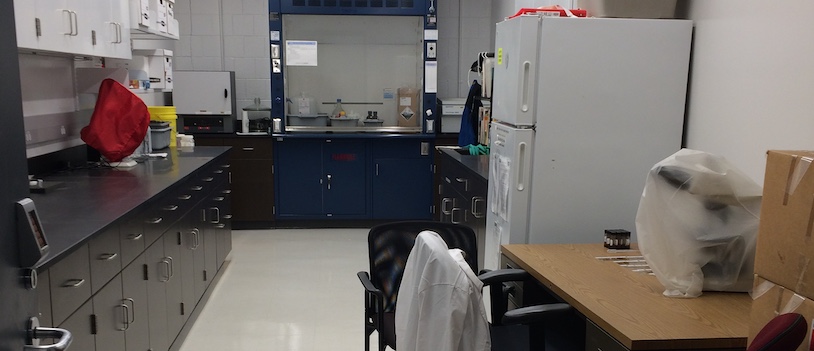- Home
- Liberal Arts
- Departments
- Anthropology
- Student Resources
- Graduate
- Archaeology Labs
Menu
- Academics
- Departments
- Africana Studies
- American Studies
- Anthropology
- Applied Linguistics
- Art & Art History
- Asian Studies
- Classics & Religious Studies
- Communication
- Economics
- English
- History
- Latin American & Iberian Studies
- Latino Studies
- Modern Languages, Literatures & Cultures
- Native American & Indigenous Studies
- Performing Arts
- Philosophy
- Political Science
- Psychology
- Sociology
- Women’s, Gender & Sexuality Studies
- Faculty & Staff
- Student Resources
- Research & Centers
- Dean's Office

Archaeology Labs
The Historical Archaeology and Anthropology labs are for faculty and students to use for research, teaching, and artifact storage. The labs are located on the first and second floors of McCormack Hall. See below for a list of Principal Investigators and descriptions of each of the lab spaces.
A Video Tour of the Labs
Artifact Processing Labs
Supervisor: Beranek
These labs are equipped with artifact cleaning and cataloguing supplies, comparative collections for lithics, glass, and ceramics, computer work stations, and a reference library. They also house a flot-tech flotation machine and have workbench space for layout, cleaning, and conservation of artifacts, particularly metals.
Conservation Lab
Supervisor: Piechota
This lab contains two microscopes - one for general inspection and close work and another for examinations using optical mineralogical techniques. More specialized equipment includes a freeze-drying chamber for waterlogged wood, a hand-held x-ray fluorescence machine, and electrolysis systems for the treatment of metals. Consultation is available on preservation issues such as artifact cleaning, stabilization and mending and on basic materials identification.
Digital Archaeology Lab
Supervisors: Steinberg, Bolender
This lab focuses on computer and technical analyses of historic maps, geophysical, geoarchaeological, and spatial field data as well as dedicated computers, survey instruments, and remote sensing equipment.
Environmental Archaeology (Paleoethnobotany/Zooarchaeology) Lab
Supervisors: Landon, Trigg
The joint zooarchaeology-paleoethnobotany lab is dedicated to the identification and analysis of plant and animal remains. The combined space houses skeletal and shell reference collections emphasizing taxa from the Northeast, and pollen, seed, wood, phytolith, and parasite collections from taxa associated with human activities in the American Northeast and Southwest. The lab maintains dissecting, low power microscopes, compound microscopes, and a high-powered metallurgical scope, along with manuals for the identification of archaeological collections. This lab has a classroom, layout space, and PC workstations. Separate facilities in the Fiske Center house specialized saws and an Ecomet grinder for tooth and shell thin sectioning, a Flote-Tech 1A for processing flotation samples, and coring equipment including a vibra-core for sediment sample collection. For more information see the Fiske Center Zooarchaeology and Paleoethnobotany labs.

New England African American Archaeology Lab
Supervisor: Lee
This lab studies the archaeology of the African Diaspora throughout the history of New England. The lab is equipped with artifact cleaning and cataloguing supplies, a microscope, a PC workstation, photography equipment, printer, bench space, and a fume hood.
New England Indigenous Archaeology Lab

Supervisor: Silliman This lab focuses on collaborative indigenous archaeology in New England, focused primarily on the longstanding project with the Eastern Pequot Tribal Nation in Connecticut. This lab houses a standard archaeology lab with layout space, artifact storage, PC workstations, flatbed and slide scanners, printer, microscopes, photography equipment, and conservation refrigerator.
Palynology Lab
Supervisors: Trigg, Popper
The Palynology lab is a clean space dedicated to extraction of pollen and parasites from soil samples. In addition to the processing equipment, the lab houses secure refrigerated storage facilities for soil samples. It also serves as research space for Virginia Popper’s macrobotanical studies.

Latin American Historical Archaeology Laboratory
Supervisor: Daniela Balanzátegui
The Latin American Historical Archaeology Lab (LAHAL) is committed to critically approaching Latin American history and heritage through interdisciplinary, multivocal, anti-racist, and ethical research. The principal project focuses on the revitalization of cimarronaje (marronage) in Ecuador, which contributes to articulating historical strategies of survival and resistance by Afro-Ecuadorian maroon women in the context of colonial slavery and modern legacies of racial discrimination and gender violence. Undergraduate and graduate students transcribe, organize, and investigate 18th-century documents, modern oral traditions, and geographical information, and they work with archaeological databases from past. The LAHAL aims to provide a platform for dialogue between Latin American, Latinx, Black, and Indigenous faculty, scholars, students, and descendent communities.
Historical Landscapes Laboratory
Supervisor: Douglas Bolender
The lab focuses on historical landscape reconstruction and analysis, with a focus on the archaeology, architecture, and spatiality of the North Atlantic and New England. It has dedicated computers for geographic information systems (GIS), photogrammetry, spatial analysis, and LiDAR processing.